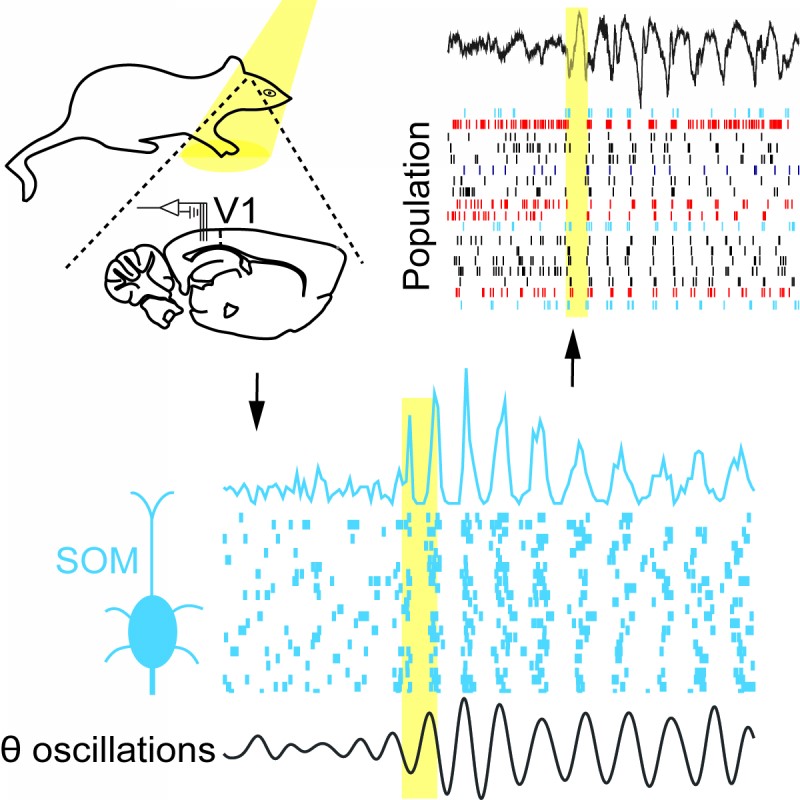Information processing in the brain relies on the dynamic interactions between neuronal populations with different rhythmic activities. Rhythmic activities of neurons in the brain are thought to underlie several functions, including sensory information processing, motor control, cognition, as well as synchronization between brain areas. Oscillatory activities within the visual system have been implicated in visual information processing, synchronization between brain areas, selective attention and working memory. Various forms of neuronal oscillations in the primary visual cortex (V1), which are thought to underlie the processing of spatiotemporal information carried by visual stimuli. Distinct subtypes of GABAergic neurons are known to play a vital role in regulating diverse rhythmic activities in the cortex. Visual stimuli enhance theta oscillations V1of mice, however, the detailed mechanisms remain unknown.

Figure 1 Visual stimuli enhance theta oscillations in V1.
November 25, 2020, team of Prof. Haohong Li publisha research articletitled Somatostatin Neurons Govern Theta Oscillations Induced by Oscillations Visual SignalsatCell Reports. They clarify the neural mechanism of theta oscillation induced by visual stimulation in V1 within vivolocal field potential recording, optrode recording and optogenetic manipulation. They demonstrate that visual stimuli enhance theta oscillations in V1 (Fig 1), visual stimuli enhance somatostatin (SOM) neurons and parvalbumin (PV) neurons spike-phase locking in the theta band, visual stimuli facilitate SOM neurons responses, but inhibited PV neurons. Furthermore, inactivation of SOM neurons attenuates the enhancement of theta oscillations induced by visual stimuli and rhythmic activation of SOM neurons enhances theta oscillations. This article elucidates the local neural circuit mechanism of theta oscillations induced by visual stimulus, which is helpful to understand the mechanism of different frequency neural oscillation in V1 (Fig 2).

Figure 2 Schematic diagram of mechanism of theta oscillations in V1.
Prof. Haohong Li is the corresponding author of this study. Dr. PengchengHuang and Dr.XinkuanXiang are the co-first authors of this study. Dr. XinfengChen is the participating author.This study was supported by the National Natural Science Foundation of China (No. 31671105, No. 91749209), the Science Fund for Creative Research Group of China (No.61721092) and the Director Fund of the Wuhan National Laboratory for Optoelectronics (Fig 3).

Figure 3